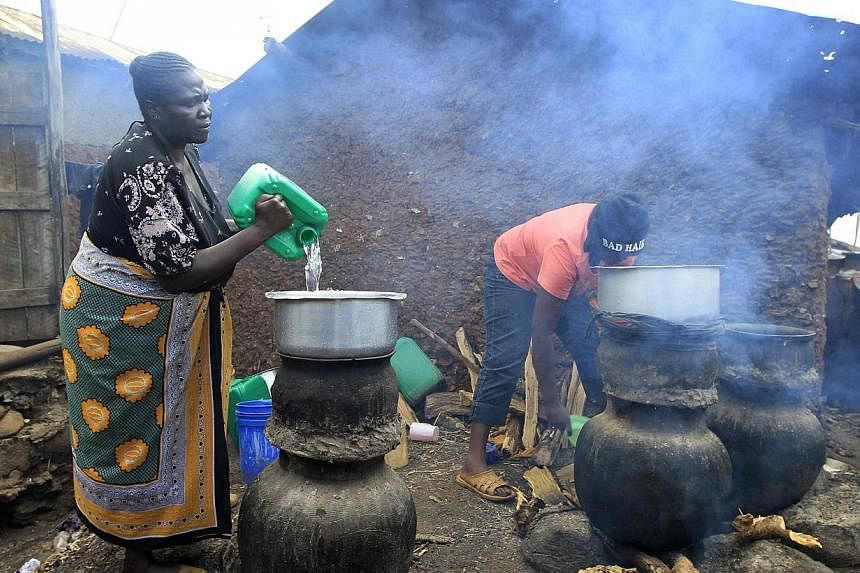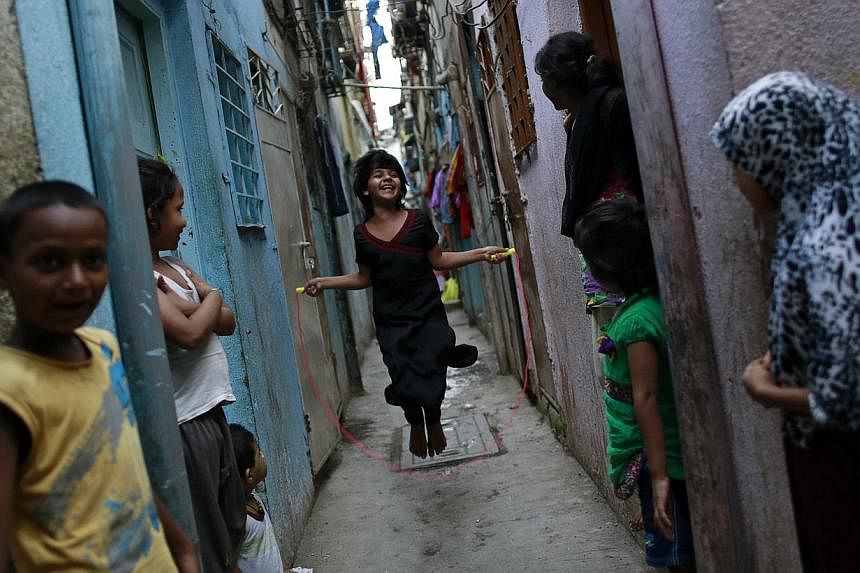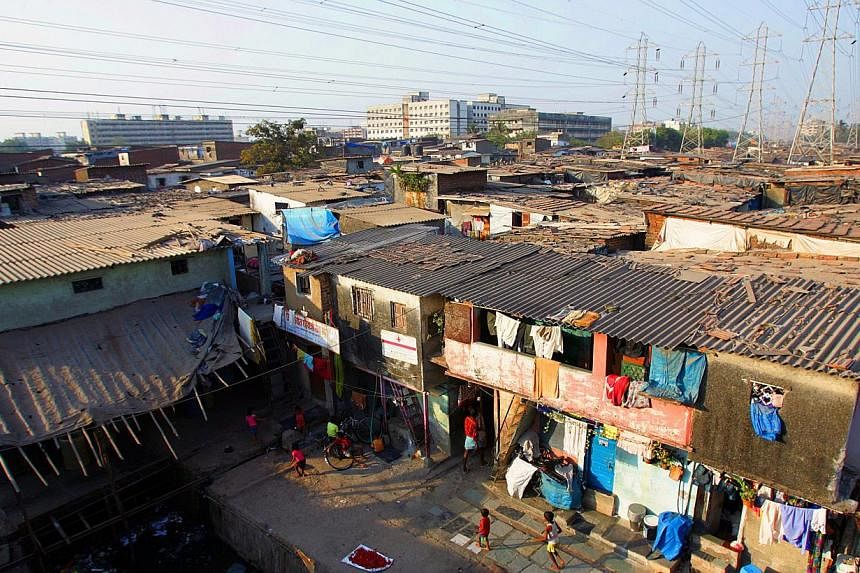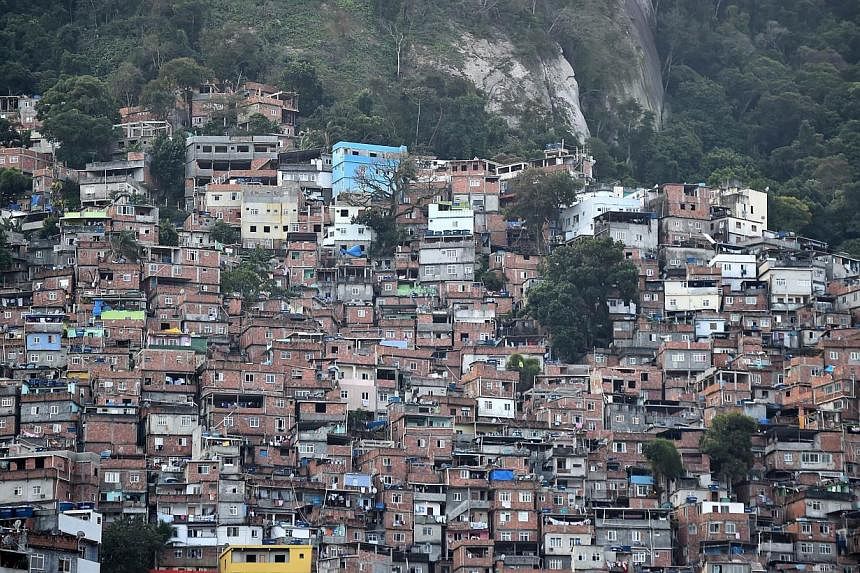Slum-tourism, which involves tourists flocking to the most impoverished places on Earth for a taste of exoticism and authenticity, has become an alternative way of travelling. It has been lauded for allowing people to understand the realities of the slums, and criticised for encouraging exploitation of the poor.
A slum household, as defined by United Nations Human Settlements Programme (UN-HABITAT), is a household that lacks access to improved water, improved sanitation, security of tenure and durability of housing or sufficient living area.
Governments around the world are still struggling to solve the prevalence of poverty, disease and crime in the slums. For example, Venezuela's skyscraper slum in Caracas, the Tower of David, is being vacated and will potentially be demolished due to the danger posed by its precarious structure. The 45-storey building was intended to be a bank centre, but constructions halted in 1993 after a financial crisis. In 2007, gangs and homeless people started flooding the building and established the tallest slum in the world.
We take a look at 10 slums to visit that are still dealing with the challenges of survival.
1. Rocinha Favela
Where: Rio de Janeiro's south zone, between Sao Conrado and Gavea, Brazil
Interesting fact: Rocinha, meaning Little Farm, is one of the largest and most famous slums in South America with 150,000 to 250,000 people living in the area. The "first world of favelas" was built illegally on a steep hillside in the 1940s overlooking Rio de Janeiro, and is one km from the Rio's famous Ipanema beach.
Look out for: Various Rocinha Favela tours that host walking trips through the narrow alleys of the favela. The tourist routes in the area are safest way to get around the shanty towns that are widely reputed for drug dealing, pickpocketing, prostitution and contagious diseases. But the favela does have a better developed infrastructure and even businesses such as banks and bus lines as compared to smaller slums.
2. City Of The Dead
Where: al-Arafa, Cairo, Egypt
Interesting fact: The City of the Dead is a necropolis dating back to 600 A.D, where half a million people literally live among the dead, along a four mile stretch of tombs and mausoleums. People had started doing so after facing a housing shortage crisis. There is a cemetery guard for the dead and a neighbourhood headman for the living, and the residents build cemeteries so as to be able to live together after death. Children, who are forced to face the morbid concept of death, populate the area.
Look out for: Hostile locals, who are not welcoming to strangers, much less those who fish out their cameras to take photographs or videos of them. But, if you are capable of exhibiting some neighbourliness these locals share with the dead, check out the suq al guma'a or Friday Market, where residents buy and sell all kinds of trinkets and junk at prices they can afford.
3. Makoko
Where: Lagos, Nigeria
Interesting fact: The Makoko slums are ironically dubbed "the Venice of Africa", where the oily waters running through the area provide little sustenance for the fishing community. It was said to be established in the 18th century as a fishing village, which later expanded when more people moved into the area. Although situated in Lagos, the largest city in Nigeria with a growing economy, the slum remains a disease-ridden and poverty-filled area. State authorities have already started efforts to chop down the stilt houses and clean up Lagos.
Look out for: Stilt houses and canoes along the floating village where women sell food and household items. Sanitation is bad and the smell emitting from the river is pungent. But recently, the Makoko Floating School, an open-air three-storey structure floating on recycled plastic barrels, was designed to address issues of flooding and poor building structures. The self-sustaining school is equipped with solar panels and has been shortlisted for the Design of the Year 2014 Award by London's Design Museum.
4. Dharavi
Where: Right in the middle of Mumbai, India
Interesting fact: One of Asia's largest slums lies right in the heart of India's financial capital, Mumbai. Originally a mangrove swamp, migrants who could not afford to live in Mumbai flocked to Dharavi to make a living. Now, it has a population density of over 800,000 people within less than a square mile, making it one of the most densely populated places on Earth. It is also the slum featured in the hit movie Slumdog Millionaire, without the Bollywood glamour, of course.
Look out for: Traffic. The roads are clogged with men cycling with cumbersome loads on their carriers. The best way is to walk along the streets to experience the cacophonic blend of Hindi, Marathi, Tamil and Telugu, and the array of informal businesses. Chai stalls are also the pulse of the slum where men smoke and carry conversations over a cup of chai tea.
5. Khayelitsha
Where: Cape Town, Africa
Interesting fact: Khayelitsha is one of Cape Town's poorest African suburbs and has one of the world's biggest slums, bearing a population explosion and the impoverishing after-effects of a post-Apartheid economy where the African population were relegated to the suburbs. There are currently around one million residents.
Look out for: Danger, as Cape Town is considered one of the crime capitals of the world. Walking around in Khayelitsha is not possible without police escort. It is also has a high rate of HIV/Aids and rampant poverty. On a brighter note, with around 40 per cent the population under the age of 18, football games are quite common.
6. Tondo
Where: Manila, Philippines
Interesting fact: The Tondo district is one of the oldest areas in Manila, dating back about 1,000 years. The intention to be an industrial port was halted when rural families started to settle into the place after World War II, turning it into a large squatter. Presently, it is also one of the most densely populated places on Earth, with 70,000 people per sq km. The government is starting to clear the area to make way for a modernised port.
Look out for: The river running through Tondo. Filled with garbage and excrement, the river is considered so polluted that the United Nations says it poses a serious risk to health. However, it remains a source of entertainment for children to play and swim in. Tondo is also infamous for destitution and crime, so all accessories or electronic items that give away foreign identity should be taken off before entering the slum.
7. Neza-Chalco-Itza
Where: Mexico City, Mexico
Interesting fact: The biggest slum in the world has around four million people living in it, and primarily faces a lack of water supply within the household. Slums in Mexico started to emerge when the railroad brought new industry, and hence more people, to the city. Predominantly Catholic, the residents are said to practice religion to pray for a better condition of life.
Look out for: The diversity of housing arrangements in the area. While most people live illegally on unauthorised land, as with most slums, some reside in low-income rental apartments that were once mansions abandoned by wealthy families.
8. Kibera
Where: Nairobi, Kenya
Interesting fact: Kibera houses around one million slum dwellers living in shacks built out of mud walls, corrugated tin roofs and dirt or concrete floors. Only 20 per cent of Kibera has electricity, and one latrine is shared by 50 shacks. The slum originated as a forest settlement for the Nubian soldiers in 1918, which grew informally with the British government's allowance.
Look out for: Cheap drugs and glue sniffing, which the residents take to alleviate their boredom and has caused addiction problems. Changaa, a cheap but very potent alcoholic brew (over 50 per cent alcohol), is also widely available, leading to problems of crime and violence in the area.
9. Orangi Town
Where: Karachi, Pakistan
Interesting fact: Situated in the periphery of Karachi, Orangi Town recently surpassed Mumbai's Dharavi to become Asia's largest slum. Although the town is only 10 years old, there are around 1.5 million people living in the 57 sq km town. The slum is also a melting pot of different cultures including the Sindhis, Punjabis, Kashmiris and more.
Look out for: Small businesses such as jewellery-making and the sale of saris and slippers can be seen throughout the town. However, beware of the crime rates. Around 77 per cent of women in Orangi have been victims of rape in the past three years.
10. Klong Toey slum
Where: Bangkok, Thailand
Interesting facts: The slum houses around 100,000 migrant workers and families from South-east Asia, and is the largest and oldest slum in Bangkok. It was originally built for labourers to stay near the port in 1950, but gradually the poor started to move into the area. The polluted waters of the Klong Toey canal run through the slum parallel to a railroad lined with houses.
Look out for: Gangs and violence in the area. The Klong Toey slum is notorious as a hub for the Thai mafia, where concentration of crime is high. Some residents of the slum, however, provide Tuk Tuk services or sell their goods on a boat floating along the canal.




